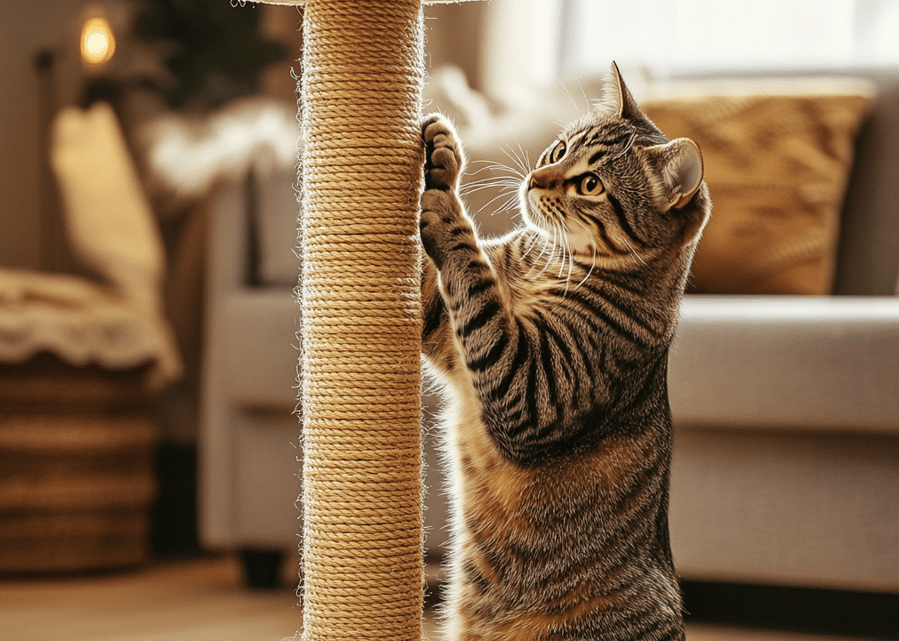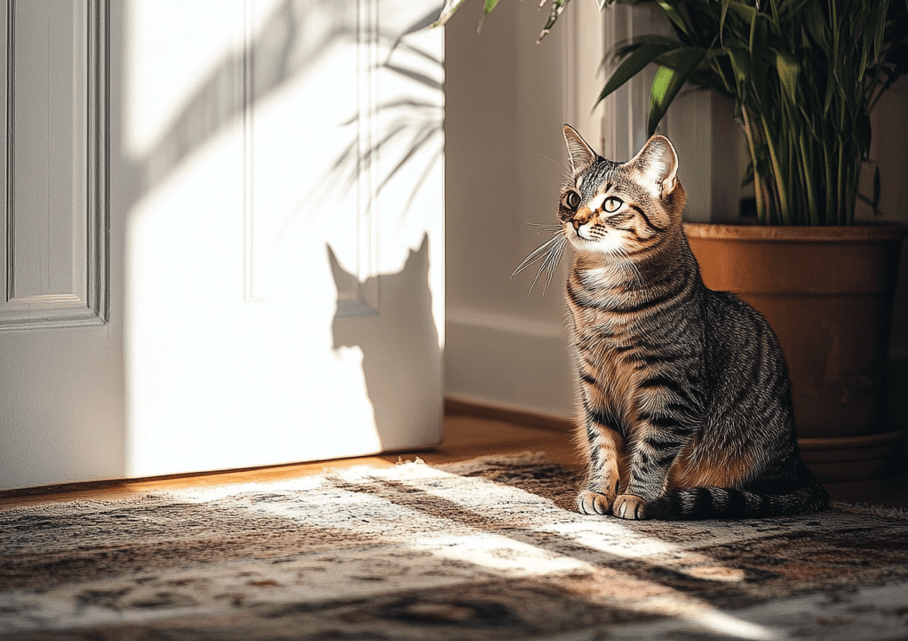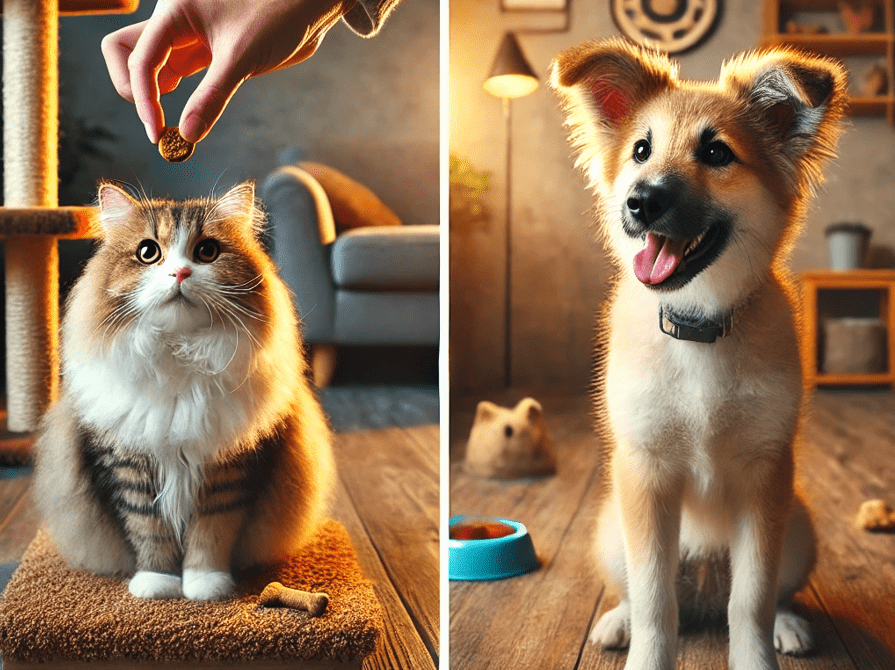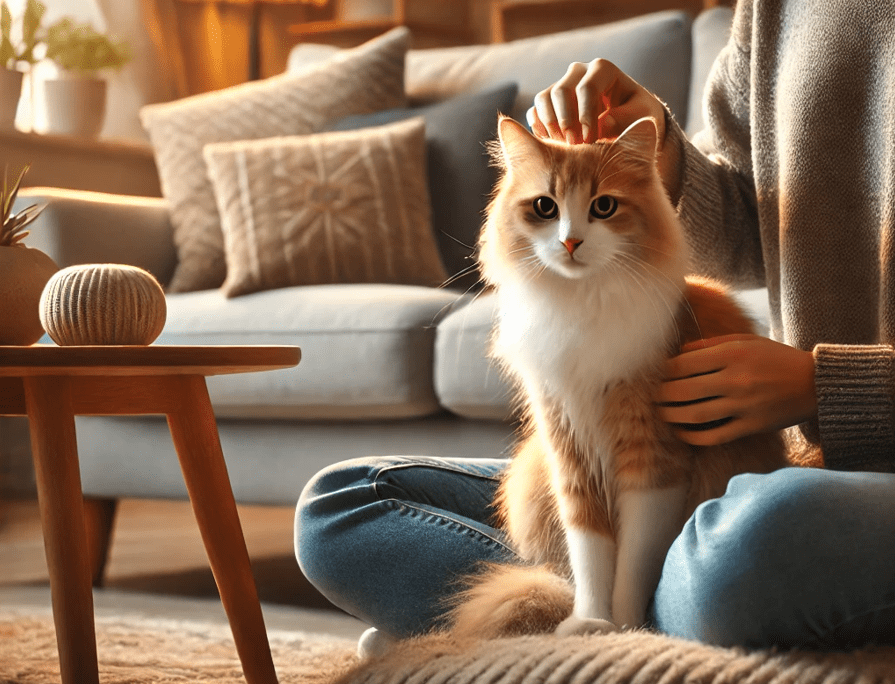
Cats are often misunderstood creatures. Cats remain solitary beings who appear strange and distant until they decide to trust someone. But what if the key to a loving relationship with your feline friend lies in building cat’s trust through training? You can develop better pet bonding with your cat through proper training programs. Training cats proves untrue myths about their behavior. This helps establish a strong bond between you. This article investigates how to gain your cat’s trust while building a happy connection in your relationship.
Why Trust Matters in Your Relationship with Your Cat
A trusting bond forms the beginning of every connection just as it does between cats and humans. When your cat feels trusting of you they also experience peace and comfort which enables them to show love. Good trust helps you manage regular cat care steps such as petting sessions, grooming treatments and medical trips. The path to trust with a cat depends on more than food or comfort serving as the only foundation. Developing trust with cats needs steady effort plus an ability to recognize how they behave.
Cats are naturally cautious animals. Wild cats must remain on guard because this behavior helps them survive threats. As hunting animals they naturally take time to adjust to unfamiliar things and individuals. Training helps cats develop trust which lets them feel secure as part of a close bond with you.
Understanding Feline Behavior: The First Step to Trust
To start training we must learn first how cats understand the world and use their bodies to show their feelings. As solitary hunters cats differ from how dogs naturally want to please their human companions. Cats want to live as independent pets who choose when and how they get involved in social activities.

Cats communicate through specific behavioral signals so pay attention to these main points.
Body Language: Cats express themselves mostly through their body postures. A content cat will show its ease through eyes that stay calm while its tail moves softly and ears point forward. A fearful cat reveals its tension by laying down its ears and puffing up its fur while holding its tail close to its body.
Scent Marking: Cats leave unmistakable scent trails through their scent glands on their face pads and paw pads plus their tails. By touching you and objects they defend their territory and express love to their humans or surroundings.
Play and Hunting: Play actions and hunting habits make up a major part of how cats enjoy their lives. Hunting simulation plays an essential role in keeping their brains active and physical fitness.
Knowing your cat’s behaviors will let you teach methods that suit both their traits and requirements.
The Role of Training in Building Trust
Training methods are more than teaching commands and tricks since they aim to create good moments that prove your cat can trust you. Quality training builds your cat’s trust because they will recognize you as someone who gives pleasure and protection. Through training your cat separates you into someone whom they trust.
1.Your cat builds better relations with you when you teach it new things using rewards and joyful activities.
2.Through training your cat learns to understand your communication methods making better connection possible.
3.Your cat will stay calm in different places through proper training because it feels secure in its abilities.
4.The training sessions create stronger links between you and your cat by strengthening your bond and mutual faith in each other.
Step-by-Step Guide to Building Cat’s Trust Through Training
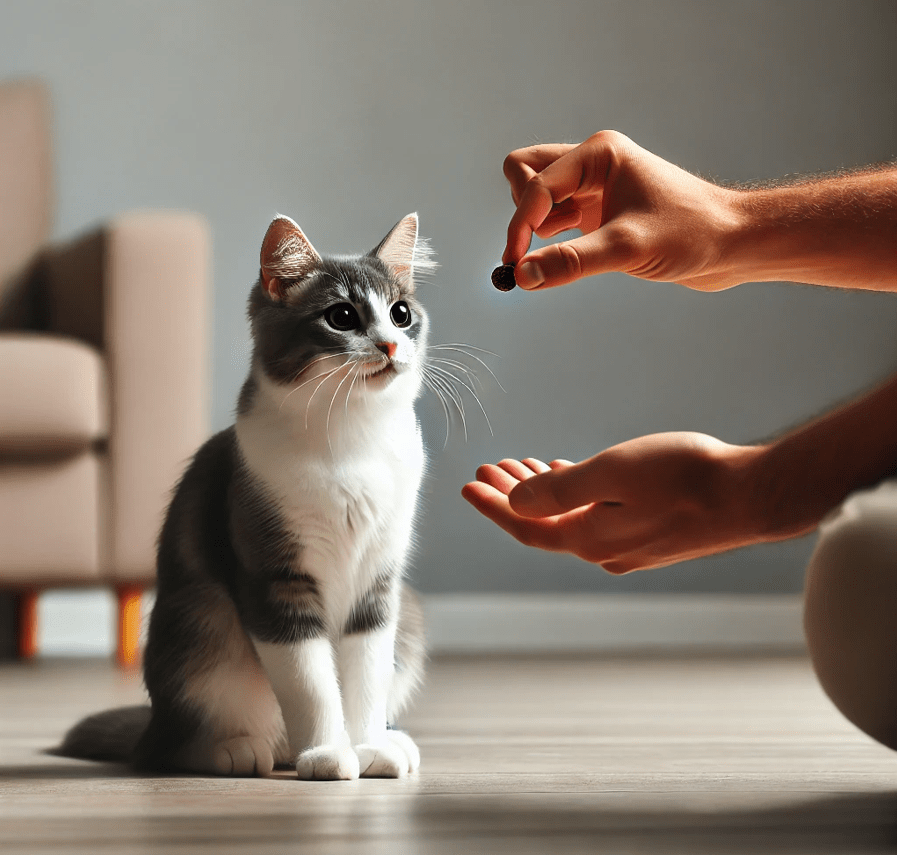
1.Start with Patience and Respect
Opening trust between you and your cat starts by making them lead the training pace. Pushing too fast while arranging encounters will likely make your cat retreat or protect itself. If possible, permit your cat to come to you first. Stay calm in a shared space but look away from your cat since direct eye contact may seem dangerous. Let your cat take the first step toward a relationship.
2.Use Positive Reinforcement
Training your cat with positive rewards brings better training results. When your cat displays wanted actions, offer food treats or accept hugs. When your cat chooses to approach you naturally give it a reward through treats or a loving touch. As your cat engages with you more it will understand that pleasant outcomes come from interacting.
3.Have training periods short and enjoyable for the best results
Training sessions with cats should end after 5 to 10 minutes because they concentrate effectively only during short periods. During each training period concentrate on one cat behavior and close with a positive interaction. Whenever your cat shows no interest or becomes uncomfortable, stop the training session and return to it later.
4.Teach Basic Commands
Having your cat follow basic commands helps you create a stronger bond through rewarding training sessions. Use a signal device to mark when your cat accomplishes the desired behavior then reward immediately.
5.Incorporate Play into Training
Playing naturally strengthens your bond with your cat and develops trust between you. Help your cat hunt by using interactive playthings, specifically feather wands and laser pointers. Include these toys during training to help your cat find learning more positive and rewarding.
6.Respect Your Cat’s Boundaries
Every cat has its limits. When your cat displays signs of stress including hissing or attempting to flee you should let it be. Forcing your cat beyond its limits will ruin your bond and stop your training development.
7.Be Consistent
Regular training practice provides the best results. Keep using the same incentives and training methods regularly to prevent confusion for your cat. Continued use of these cues will create positive behavior patterns in your cat.
Common Mistakes to Avoid

Taking good actions does not mean you cannot make errors while attempting to trust your cat. Make sure to consider these typical errors people encounter when building trust:
Overwhelming Your Cat: Excessive noisy surroundings combined with increased activity and touch make cats feel insecure. Let them need time to accept new settings before moving on.
Ignoring Their Signals: Limit contact with your cat when it displays fear signs. Accept their need for privacy by staying at a distance.
Skipping the Basics: A healthy cat needs these basic needs including a clean place to use the bathroom, enough drinking liquid and proper dietary nutrition. A poor connection with your cat happens when you ignore these standard needs.
Real-Life Example: How Training Transformed Alooz’s Relationship with Her Owner
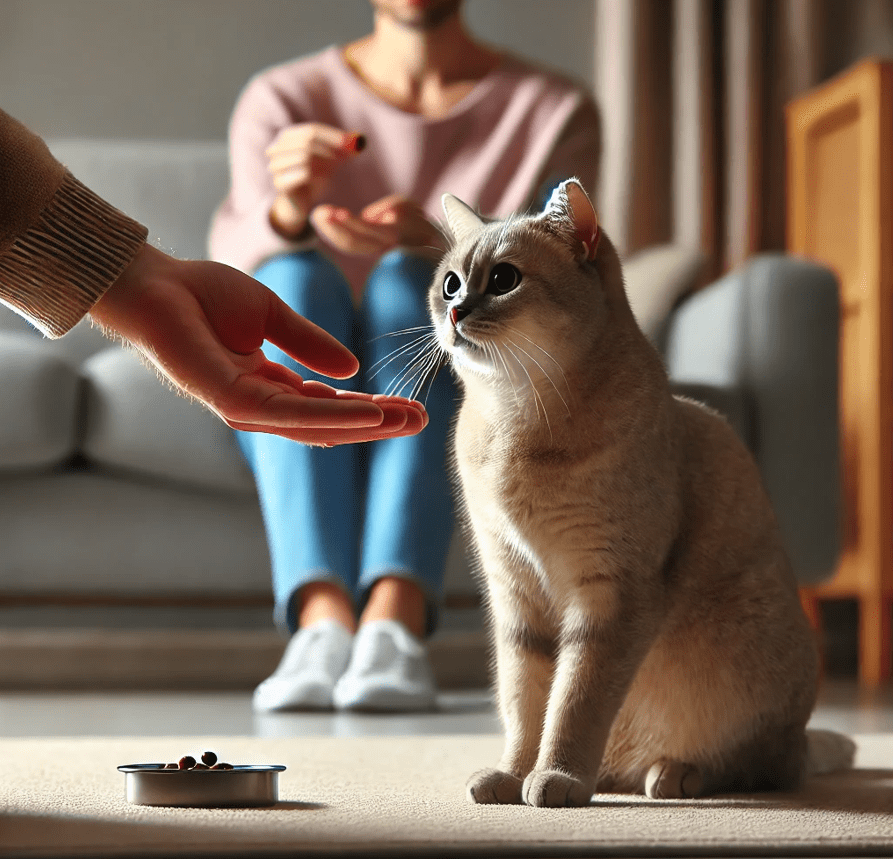
Avishek adopted Alooz as a rescue cat but Alooz showed clear signs of distrust toward him. Under the bed she would stay hidden and produce a hostile sound upon Avishek’s entry. Avishek chose to teach Alooz trust through training exercises because he wanted their bond to grow.
He stayed nearby Alooz without disturbing her and used gentle words while handing out rewards. Slowly Alooz left her hiding spot to see what kind of treats her owner offered. Avishek added brief feather wand playtime to teach Alooz the new behaviour. Alooz slowly trusted Avishek because she connected him with enjoyable activities and positive rewards.
Avishek now has a trustworthy and loving relationship with Alooz because she happily greets him when he returns home and allows grooming sessions. Through dedicated training Avishek showed Alooz that trust and friendship were possible even after starting from a hidden place.
Common Challenges and How to Overcome Them
Fearful or Traumatized Cats: Cats who lived through tough experiences need more time to build friendship. Show kindness and keep away from pushing your cat to interact. Feed high-reward treats to your cat in a private and peaceful space at first.
Overly Independent Cats: A few cats display inherent shyness which leads them to avoid social contact. Let them stay private but set occasions to connect. Gently bring your cat to play and treat experiences to build interaction.
Multi-Cat Households: Cats in multi-cat households need their own personalized care time. Teach each cat in a private setup to maintain their self-worth.
The Long-Term Benefits of Building Cat’s Trust Through Training
The work invested in teaching your cat will create many positive results. A trusted cat will show positive behavior.
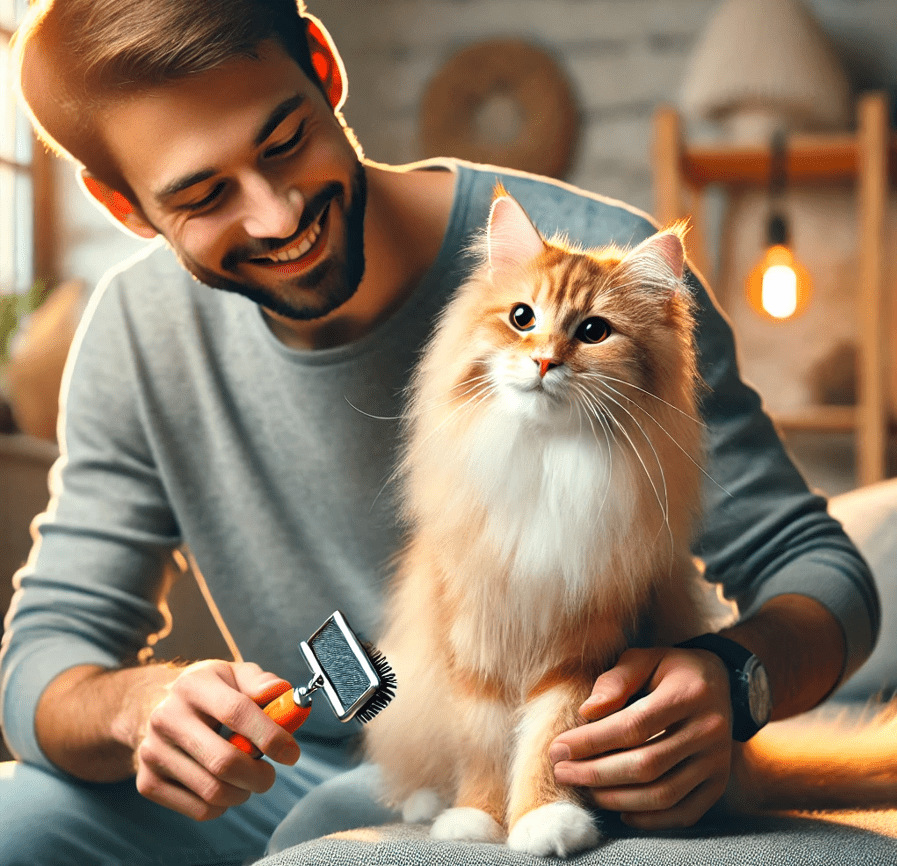
1.Your cat will look for you to offer love and friendship.
2.Your cat should grow calm and strong when facing fresh experiences.
3.Your cat will work with you better at scheduled appointments and wellness procedures.
4.Trained cats show fewer unwanted behaviors including hitting and using the litter box improperly.
The training bond you establish will enhance your relationship while sharing happiness with your cat.
Final Thoughts
Training cat trust needs patient practice with clear plans to understand feline behavior. You will build trust with your cat by setting up positive times and staying within their comfort zones while using play and rewards.
Keep in mind that each cat needs its own training program to develop trust which requires time. With patience and love you can achieve lasting connection with your cat.

